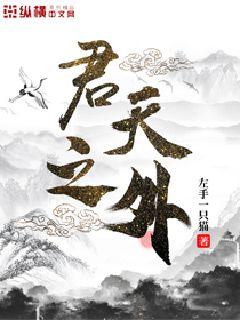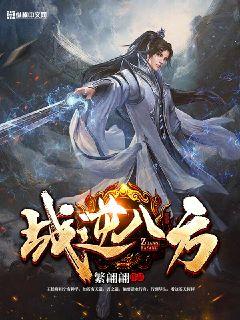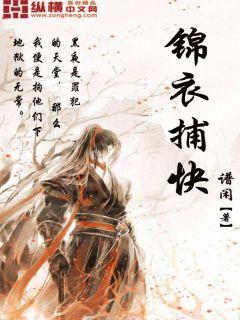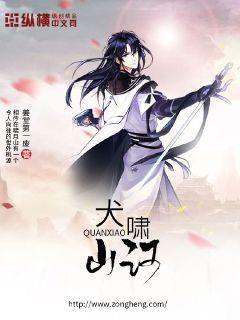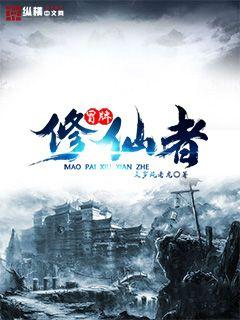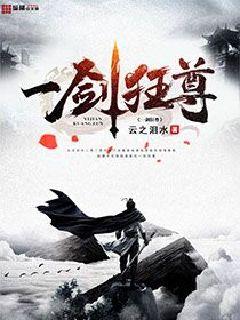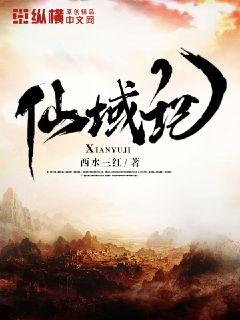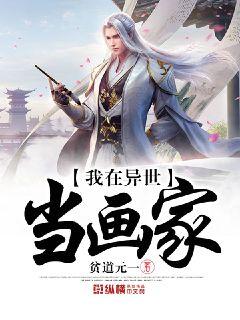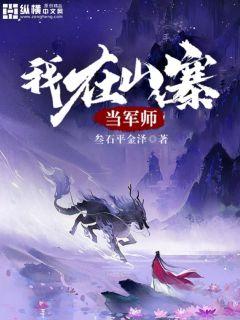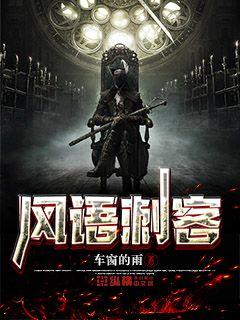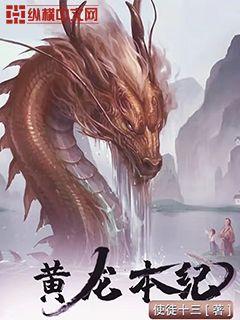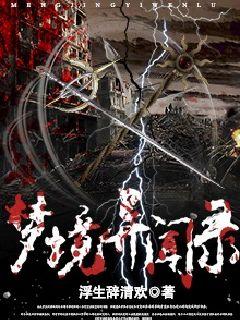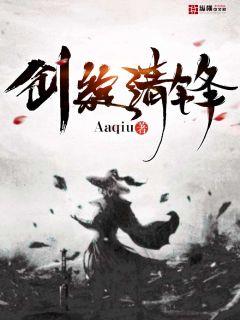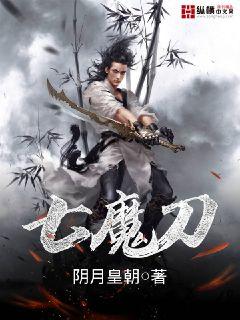
文章摘要:本文探讨了日本老将在体育赛场上展现的新风采,尽管年龄已高,他们的实力依然不减,展示了顽强的竞技精神和长久的运动激情。
1、经验丰富
日本老将以其丰富的比赛经验和深厚的体育功底,展示出独特的比赛风采。他们通过多年的训练和比赛历程,积累了无法替代的技术和战术智慧。
他们在关键时刻的冷静应对和对局势的精准把握,常常成为球队的关键支柱。无论是战术部署还是心理素质,他们都展现出超乎寻常的成熟和稳定性。
这种经验的积累不仅仅在比赛中发挥作用,更深刻地影响了整个团队的战斗力和凝聚力。
2、技术精湛
尽管年岁已高,日本老将在技术层面的精湛表现仍然令人惊叹。他们通过长期的专业训练和个人努力,保持着高水平的体能和灵活的身体状态。
无论是运动的基本功,还是高级的技战术应用,他们在赛场上的表现始终如一,展现出技艺的精深和成熟。
他们的技术优势不仅仅是单纯的个人能力,更体现在团队协作和比赛节奏的掌控上,为整个团队注入了稳定和信心。
3、精神顽强
顶尖运动需要顽强的毅力和不屈的精神,日本老将在这方面展现出了非凡的耐力和毅力。他们在面对逆境和困难时,能够保持镇定和积极的态度。
不论是长期的伤病康复,还是竞争环境的变化,他们都能够通过自身的努力和信念,逐渐走出困境,重新找回最佳状态。
这种顽强的竞技精神不仅仅是对个人意志力的体现,更是激励团队全体成员不断进步和挑战自我的重要动力。
4、影响深远
日本老将不仅在比赛中发挥重要作用,他们的影响力也深远超越赛场。作为团队的领袖和榜样,他们传递出的价值观和职业精神,成为后辈运动员学习和效仿的对象。
他们的职业生涯不仅仅是个人的辉煌,更是对整个体育界的贡献。通过他们的示范和影响,体育文化得到了传承和发展。
他们的故事不仅激励了年轻一代追求卓越,也为整个国家的体育事业注入了新的活力和动力。
总结:
日本老将展现的新风采,体现了长期专业训练和毅力的结晶。他们以丰富的经验、精湛的技术、顽强的精神和深远的影响力,为体育界树立了榜样,为团队带来了稳定和胜利。
文章摘要:高考体育单招培训班致力于提升学生竞技水平,打开未来之路。在本文中,将从四个方面深入探讨这一培训班的重要性和价值,为学生的成长和发展提供有力支持。
1、培训班目标明确
高考体育单招培训班制定明确的培训目标,包括技能提升、体能训练、心理辅导等方面。通过系统设置的课程和训练计划,学生能够全面提升自身竞技水平,为未来进入体育领域打下坚实基础。
培训班注重学生个性发展,根据学生的特长和需求量身定制培训计划,培养他们在体育方面的专业能力。
通过科学的训练和指导,学生在培训班中持续进步,不仅增强了竞技水平,还提升了自信心和团队合作能力。
2、专业师资团队
高考体育单招培训班拥有专业的师资团队,他们在相关领域拥有丰富的教学经验和实战经验。
师资团队定期更新教学内容,紧跟体育领域最新发展动向,确保培训课程的时效性和有效性。
师资团队注重激发学生学习兴趣,启发他们的体育潜力,帮助他们发现和培养自己的优势。
3、设施和装备先进
高考体育单招培训班的设施和装备先进完善,为学生提供良好的学习和训练环境。
设施包括专业体育场馆、训练器材等,能够满足学生不同项目的训练需求。
先进的设施和装备有助于提升学生的训练效果,增强他们的竞技能力和适应能力。
4、辅助服务全面
高考体育单招培训班提供全面的辅助服务,包括营养指导、伤病防护、心理辅导等方面的支持。
辅助服务帮助学生保持良好的生活习惯和训练状态,提升他们的身体素质和竞技表现。
全面的辅助服务为学生提供了周全的关怀和保障,使他们能够更好地专注于体育训练和学习。
总结:
高考体育单招培训班通过明确的培训目标、专业师资团队、先进的设施装备和全面的辅助服务,为学生提供了全方位的培训支持,帮助他们提升竞技水平,实现未来之路的光明前景。
文章摘要的内容:韩国足球在过去几十年中经历了崛起和挑战,从一支弱旅到亚洲足球劲旅的转变,体现了韩国足球的进步和努力。本文将从韩国足球的历史发展、国家队成就、职业联赛和青训体系四个方面展开详细阐述,探讨韩国足球崛起的原因和面临的挑战。最后对韩国足球的现状进行总结归纳,展望未来发展方向。
1、韩国足球的历史发展
韩国足球起步较晚,但在20世纪后期开始崛起,与政府的扶持和全民热情不无关系。
20世纪80年代,韩国足球迎来了第一次高峰,取得了亚洲杯的冠军,为后来的崛起奠定了基础。
韩国足球的发展道路曲折,曾经屡次遭遇挫折,但通过改革和长期规划,逐渐走上正确轨道。
2、韩国国家队的成就
韩国国家队在世界杯赛场上表现亮眼,尤其是2002年世界杯取得第四名,让全世界瞩目。
国家队的成绩提升离不开选材和战术的不断改进,以及对球员的精心培训和管理。
韩国国家队代表着韩国足球的风采,也是民族自豪感的象征,给予了年轻球员更多的榜样和动力。
3、职业联赛的发展与挑战
韩国的职业联赛K联赛在提高水平和影响力方面取得了长足进步,吸引了不少国际球星和教练加盟。
但职业联赛也面临一些挑战,比如财政困难、球迷热情不高、球员培养机制有待完善等问题,需要进一步改善。
职业联赛是培养优秀球员的摇篮,发展职业足球也是韩国足球崛起的重要保障。
4、青训体系的重要性和发展
韩国足球的青训体系日益完善,注重从小培养球员的技术、意识和品德,培养出了不少优秀的年轻球员。
青训体系是未来韩国足球崛起的关键,通过科学的教学方法和系统化的训练计划,不断输送优秀新秀。
青训也是长期发展的重要支撑,只有注重青训,才能夯实韩国足球的未来基础。
总结:
韩国足球的崛起是经过多年的积累和努力,展现出韩国足球的实力和潜力。但也要直面挑战,如职业联赛的发展和青训体系的不断完善,需要持续努力。韩国足球需要继续保持努力和进取精神,面对挑战并取得更好的成绩,为亚洲足球的发展做出更大贡献。
贝格球员:探索历史与技术的融合
本文探讨贝格球员如何在其独特的历史背景和前沿技术之间找到平衡和创新。从其起源到现代应用,贝格球员不仅是一种运动装备,更是体育科技发展的重要里程碑。本文将从历史渊源、技术革新、竞技应用和未来前景四个方面深入探讨,以展示这一装备如何在过去、现在和未来的交汇点上不断演进。
1、历史渊源
贝格球员的起源可以追溯到哪些历史事件?它最初是如何发展为现代体育中不可或缺的一部分的?通过深入研究贝格球员的历史演变,我们可以看到其如何从简单的概念逐步演化为高度工程化的复杂装备。
贝格球员在不同文化中的传播和演变过程中,承载了哪些文化符号和象征?这些历史因素如何影响了其设计和制造过程?
随着时间的推移,贝格球员在各个历史时期的功能和用途有何显著变化?这些变化如何反映出当时社会和技术的发展水平?
2、技术革新
现代贝格球员背后的技术革新是什么?材料科学、工程设计和生产工艺的进步如何推动了贝格球员的性能提升?
与传统材料相比,先进材料在贝格球员制造中的应用带来了哪些显著的改进?这些改进如何影响了运动员的表现和安全性?
通过分析贝格球员技术革新的具体案例,我们可以了解到技术如何改变了体育竞技的面貌,以及这些改变对运动员和赛事的影响。
3、竞技应用
贝格球员在不同体育项目中的应用有何不同?它们如何根据不同比赛要求进行定制和优化?
贝格球员的设计如何影响运动员在比赛中的策略和表现?它们在提供保护的同时是否影响了运动员的灵活性和敏捷性?
通过分析贝格球员在各类竞技项目中的实际应用,可以看出其在提升运动员竞技水平和安全性方面的实际效果。
4、未来前景
贝格球员在未来的发展方向是什么?新技术和创新设计将如何进一步改进贝格球员的性能和功能?
随着智能技术的发展,贝格球员可能如何融入智能化系统,以提供更精准的数据和反馈?这种发展对于体育训练和科学研究将产生怎样的影响?
未来的贝格球员设计可能如何应对环境变化和可持续发展的挑战?可再生材料和生态友好设计在这一领域中的应用前景如何?
总结:
贝格球员作为历史和技术融合的典范,不仅是体育装备的代表,更是科技进步和文化演变的见证。其历史渊源、技术革新、竞技应用和未来前景展示了一种运动装备如何在不同时代持续演进和创新,不断推动体育科技的发展。
在未来,随着技术的进一步进步和需求的不断变化,贝格球员将继续在体育领域发挥重要作用,为运动员提供更安全、更高效的竞技环境。
龙杯盛事:璀璨竞技与文化交融
龙杯盛事是一场独特的文化盛宴,融合了激烈的竞技与深厚的文化底蕴。本文将从竞技的激情、文化的传承、社交的互动和艺术的表现四个方面对龙杯盛事进行详细阐述,展现其独特魅力。
1、竞技激情
龙杯盛事的核心在于激烈的竞技,各类赛事汇聚了来自世界各地的顶尖选手,展现出顶尖水平的竞技风采。参与者们在赛场上奋力拼搏,向世界展示了技艺和勇气,令观众为之倾倒。
在龙杯盛事的各个比赛项目中,选手们不仅展现了个人的才华和技能,更传递了团队合作与拼搏精神。他们的每一次奋斗都是对体育精神的最好诠释,也是对竞技运动的最高礼赞。
此外,龙杯盛事还为观众提供了亲临现场感受比赛的机会,使得整个赛事充满了热情与活力。
2、文化传承
龙杯盛事不仅是一场体育赛事,更是文化的传承与弘扬。在比赛间隙,各种文化活动如民俗表演、传统工艺展示等丰富多彩,使得参与者与观众能够深入了解各个国家和地区的文化底蕴。
通过举办龙杯盛事,传统文化得以传承和弘扬,民族特色得以展示和发扬。这不仅促进了各个民族文化的多元交流,也为文化的创新和发展提供了契机。
同时,龙杯盛事还为年轻一代提供了学习和了解传统文化的平台,激发了他们对文化传统的兴趣与热爱。
3、社交互动
龙杯盛事是一个人们相聚交流的重要场所,参与者和观众们在这里可以结识志同道合的朋友,拓展人脉和社交圈子。无论是赛场上还是赛后的交流活动,都充满了互动与交流的氛围。
龙杯盛事为各个行业领域的从业者提供了一个交流合作的平台,促进了不同领域之间的沟通与合作。这种跨界交流不仅有助于推动各个行业的发展,也为社会的进步注入了新的活力。
通过参与龙杯盛事,人们可以结识到来自世界各地的朋友,拓展了自己的人脉资源,同时也增进了对不同文化的理解和尊重。
4、艺术表现
龙杯盛事不仅是体育竞技的舞台,也是艺术表现的平台。赛事期间,各种艺术形式如音乐、舞蹈、绘画等丰富多彩,为观众呈现了一场视听盛宴。
艺术表现不仅丰富了龙杯盛事的内容,也为比赛增添了别样的魅力。音乐舞蹈表演为赛事注入了节奏感与活力,绘画展览则为观众提供了艺术的享受与沉思。
通过艺术的表现,龙杯盛事呈现出了多样化的文化内涵和艺术魅力,使得整个赛事更加丰富多彩,观众们也能够在其中获得更多的美学享受。
总结:
龙杯盛事集竞技激情、文化传承、社交互动和艺术表现于一体,展现了璀璨的魅力。通过激烈的竞技、丰富的文化活动、深度的社交互动和精彩的艺术表现,龙杯盛事成为了一个融合了多种元素的综合性文化盛宴,不仅激发了人们的热情与活力,也为文化的传承与发展做出了积极的贡献。
### 文章摘要
松钦,作为足球界的传奇人物,他不仅在场上展现了非凡的球技和领导力,更在足球管理和教练事业上留下深远影响。本文将从松钦的球员生涯起步,探讨他在教练、管理者和影响力领域的成就,以及他对足球界传奇的定义。
### 1、球员时代
松钦早期的职业生涯
他在球场上的表现和突出成就
松钦在球队中的领导地位和影响力
### 2、教练生涯
松钦转型为教练的经历和决策
他作为教练的战术风格和策略
培养出的杰出球员和团队成就
### 3、管理者角色
松钦作为足球管理者的贡献和影响
他在俱乐部管理中的战略和执行力
对俱乐部长期发展的影响和遗产
### 4、影响力与传奇
松钦对足球界影响力的源泉和特点
他的传奇地位如何定义和评价
松钦对年轻球员和教练的激励和启发
总结:
松钦以他在球员、教练和管理者身份的卓越成就,以及对足球界传奇的深远影响,树立了不朽的足球楷模形象。他的影响不仅限于球场,更是一代足球人的精神指引和标杆。
Certainly! Here's the structured article on "Optimizing Training Performance through Nutrition and Diet for Professional Athletes":
**Abstract:**
Professional athletes rely heavily on nutrition and diet to enhance their training performance. This article explores key factors that optimize their performance through dietary strategies. It examines the role of macronutrients, micronutrients, hydration, and timing of meals in maximizing athletic potential. By understanding and implementing these factors, athletes can achieve peak performance and maintain optimal health.
---
**1、Macronutrients:**
Macronutrients play a fundamental role in the diet of professional athletes, influencing energy levels, muscle recovery, and overall performance.
Athletes typically require a balanced intake of carbohydrates, proteins, and fats to meet their energy demands and support muscle repair.
Carbohydrates serve as a primary fuel source, especially during high-intensity activities, emphasizing the importance of adequate intake and timing to sustain performance.
1、Proteins:
Proteins are essential for muscle repair and growth, with athletes needing slightly higher amounts to recover effectively from training sessions.
Timing protein consumption around workouts is crucial for maximizing muscle synthesis and adaptation to exercise-induced stress.
A variety of protein sources, including lean meats, dairy, and plant-based options, offer athletes flexibility in meeting their nutritional needs.
2、Fats:
Healthy fats contribute to sustained energy levels and support overall health in athletes, emphasizing sources like nuts, seeds, and fatty fish.
A balanced intake of omega-3 and omega-6 fatty acids aids in reducing inflammation and optimizing recovery post-training.
Adjusting fat intake based on training intensity and individual metabolic needs helps athletes maintain optimal body composition and performance.
3、Carbohydrates:
Carbohydrates are critical for replenishing glycogen stores and providing quick energy during intense exercise sessions.
Choosing complex carbohydrates such as whole grains and vegetables ensures sustained energy release and supports prolonged athletic performance.
Strategic carb-loading before competitions or high-demand periods helps athletes maximize glycogen storage and enhance endurance.
---
**2、Micronutrients:**
Beyond macronutrients, micronutrients are essential for maintaining overall health, supporting immune function, and optimizing athletic performance.
Athletes require adequate intake of vitamins and minerals to support physiological processes, including bone health, oxygen transport, and muscle contraction.
Key micronutrients such as iron, calcium, vitamin D, and antioxidants play crucial roles in reducing the risk of injury and illness among athletes.
1、Iron and Calcium:
Iron is vital for oxygen transport and energy production, particularly significant for endurance athletes to prevent fatigue and optimize performance.
Calcium supports bone health and muscle function, essential for maintaining skeletal integrity and reducing the risk of stress fractures.
Ensuring sufficient intake of these minerals through diet and, if necessary, supplementation helps athletes meet their unique nutritional demands.
2、Vitamins and Antioxidants:
Vitamins such as vitamin D, C, and E contribute to immune function and recovery, aiding in the repair of muscle tissue and reducing oxidative stress.
Antioxidants from fruits, vegetables, and nuts help mitigate exercise-induced inflammation and support cellular repair processes post-exercise.
Strategies to incorporate a diverse range of micronutrient-rich foods into an athlete’s diet promote overall health and optimize training adaptations.
3、Hydration:
Hydration is critical for maintaining performance and preventing dehydration-related complications during training and competition.
Athletes should monitor fluid intake to replace losses through sweat, adjusting consumption based on environmental conditions and individual sweat rates.
Optimal hydration supports thermoregulation, nutrient transport, and cognitive function, enhancing overall athletic performance and recovery.
---
**3、Timing of Meals:**
The timing of meals and nutrient intake around training sessions is crucial for optimizing energy availability, promoting recovery, and supporting adaptation to exercise stress.
Strategic meal timing helps athletes maximize glycogen storage, enhance muscle protein synthesis, and minimize muscle breakdown.
Pre-exercise nutrition focuses on providing adequate carbohydrates for fuel and minimizing gastrointestinal distress during workouts.
1、Pre-Exercise Nutrition:
Consuming a balanced meal or snack containing carbohydrates and a moderate amount of protein 2-4 hours before exercise provides sustained energy and supports muscle function.
Hydration before exercise ensures adequate fluid balance and enhances thermoregulation during physical exertion, optimizing performance and reducing the risk of dehydration.
2、Post-Exercise Recovery:
Immediately following exercise, consuming a combination of carbohydrates and proteins within the first 30 minutes to 2 hours supports glycogen replenishment and muscle repair.
Timing protein intake post-exercise stimulates muscle protein synthesis, facilitating recovery and adaptation to training-induced stress.
Incorporating micronutrients and fluids into post-exercise meals aids in rehydration, replenishment of electrolytes, and overall recovery.
3、Nutrient Timing Strategies:
Strategically timing meals and snacks throughout the day maintains stable blood sugar levels and sustains energy for consistent training performance.
Adjusting nutrient intake based on training volume and intensity helps athletes meet their energy demands and achieve optimal nutrient timing for enhanced performance.
Individualized nutrition plans tailored to training schedules and performance goals optimize nutrient timing strategies, supporting long-term athletic success.
---
**4、Conclusion:**
Optimizing training performance through nutrition and diet involves a comprehensive approach focusing on macronutrients, micronutrients, hydration, and meal timing.
By understanding the role of each component and implementing evidence-based strategies, athletes can enhance performance, support recovery, and maintain overall health.
Continued research and personalized nutrition plans are essential to meet the unique needs of professional athletes and maximize their athletic potential.
Overall, integrating these key factors into a structured nutrition plan empowers athletes to achieve peak performance and excel in their respective sports.
Certainly! Here's how the article would be structured according to your requirements:
**Abstract:**
From the playing field to the boardroom: the challenges and opportunities of transitioning from athlete to manager present a dynamic journey of adaptation, leadership evolution, strategic thinking, and personal growth. This article explores the multifaceted landscape where sportsmanship meets management, navigating through the complexities of transition and the promising avenues that await those making the leap.
---
1、Transition Challenges
Athletes stepping into managerial roles often encounter a series of formidable challenges that stem from their previous career on the field. Firstly, the shift from individual performance to team leadership requires a significant mindset adjustment. Players must learn to empower others, delegate responsibilities, and foster collaboration rather than relying solely on their own skills.
Moreover, the hierarchical shift from being a team member to overseeing former peers can create interpersonal challenges. Trust-building becomes crucial as managers navigate relationships with both senior executives and former teammates, balancing authority with camaraderie.
Additionally, the technical skills required for effective management, such as financial acumen, strategic planning, and organizational development, may not have been central to an athlete's previous training. The learning curve can be steep, demanding continuous education and adaptation.
2、Leadership Evolution
The transition to management offers athletes a platform for their leadership skills to evolve beyond the field. Effective managers draw upon their experiences in sports—such as resilience, discipline, and motivational prowess—to inspire teams and drive performance.
Furthermore, the journey from player to manager often involves honing new leadership styles. Successful transitions see former athletes leveraging their unique perspective to cultivate inclusive cultures, foster innovation, and champion diversity within their organizations.
Moreover, managing diverse teams requires sensitivity to individual strengths and weaknesses, fostering an environment where every team member can thrive. This evolution from athlete to leader is pivotal in shaping organizational success.
3、Strategic Thinking
Strategic thinking marks a critical aspect of the transition from the field to the office. Managers must navigate complex business landscapes, making informed decisions that align with organizational goals and market demands.
Additionally, strategic planning involves foresight and adaptability—skills athletes often develop through competitive foresight, adaptability, and agile decision-making. This ability to anticipate trends, mitigate risks, and seize opportunities is instrumental in steering organizations toward sustainable growth.
Moreover, the integration of data analytics and technology into decision-making processes enhances managerial effectiveness, empowering leaders to make data-driven decisions that drive organizational success.
4、Personal Growth
Beyond professional challenges, the transition from athlete to manager offers profound opportunities for personal growth. Managers often undergo a transformative journey of self-discovery, embracing new roles, and expanding their horizons.
Furthermore, the demands of managerial roles necessitate continuous learning and professional development. Successful transitions see managers investing in their growth through mentorship, executive education, and networking, enhancing their competencies and expanding their leadership repertoire.
Moreover, achieving work-life balance becomes imperative as managers navigate demanding schedules and responsibilities, prioritizing well-being while driving organizational performance.
Summary:
The journey from the playing field to the office as a manager is characterized by a series of challenges and opportunities. Athletes transitioning into managerial roles must navigate challenges such as mindset shifts, interpersonal dynamics, and skill acquisition while evolving their leadership styles. Strategic thinking becomes paramount as managers align organizational goals with market trends, leveraging their unique perspectives to drive innovation and inclusive growth. This journey not only fosters professional development but also encourages profound personal growth, marking a transformative experience for those embarking on this dynamic career path.
